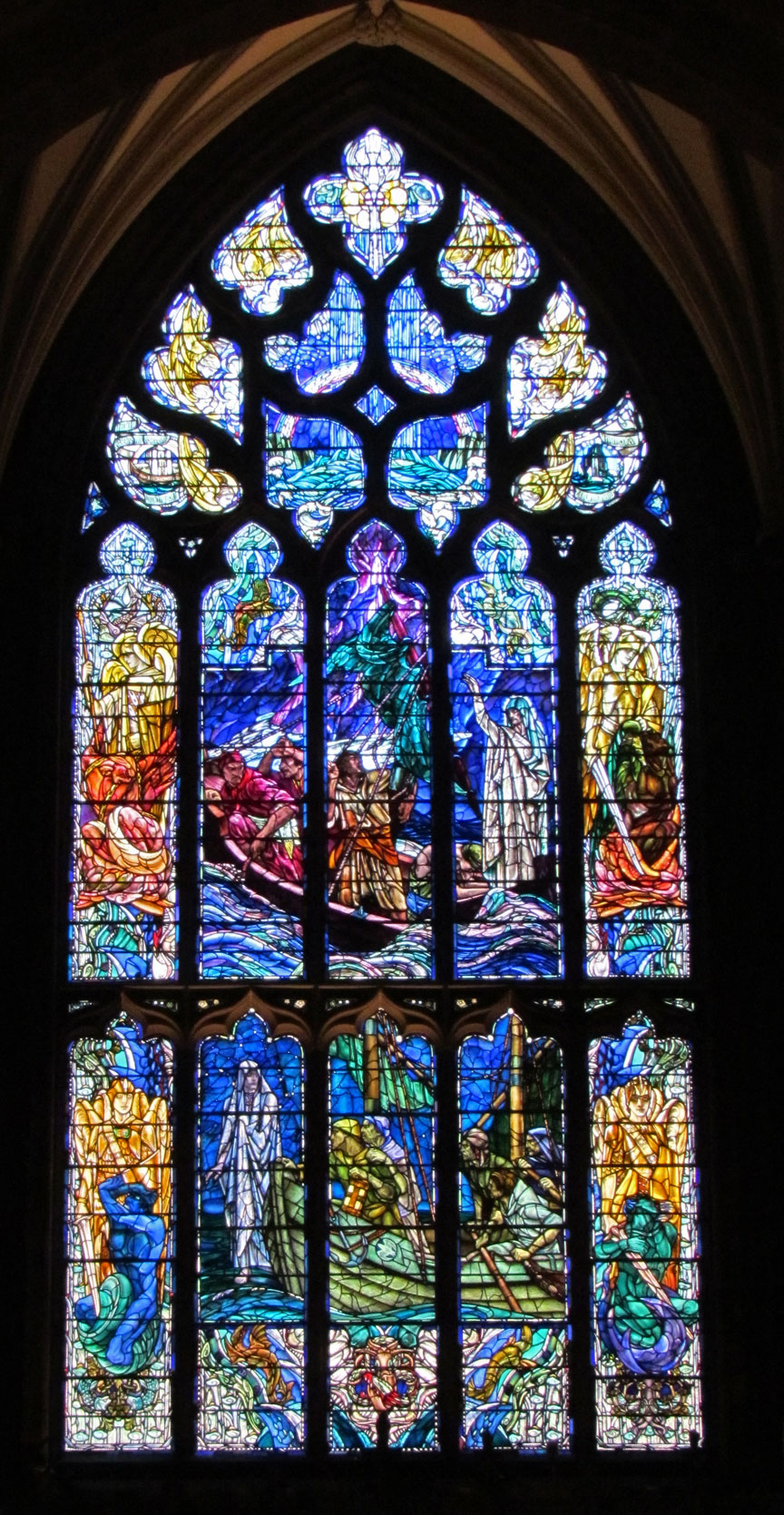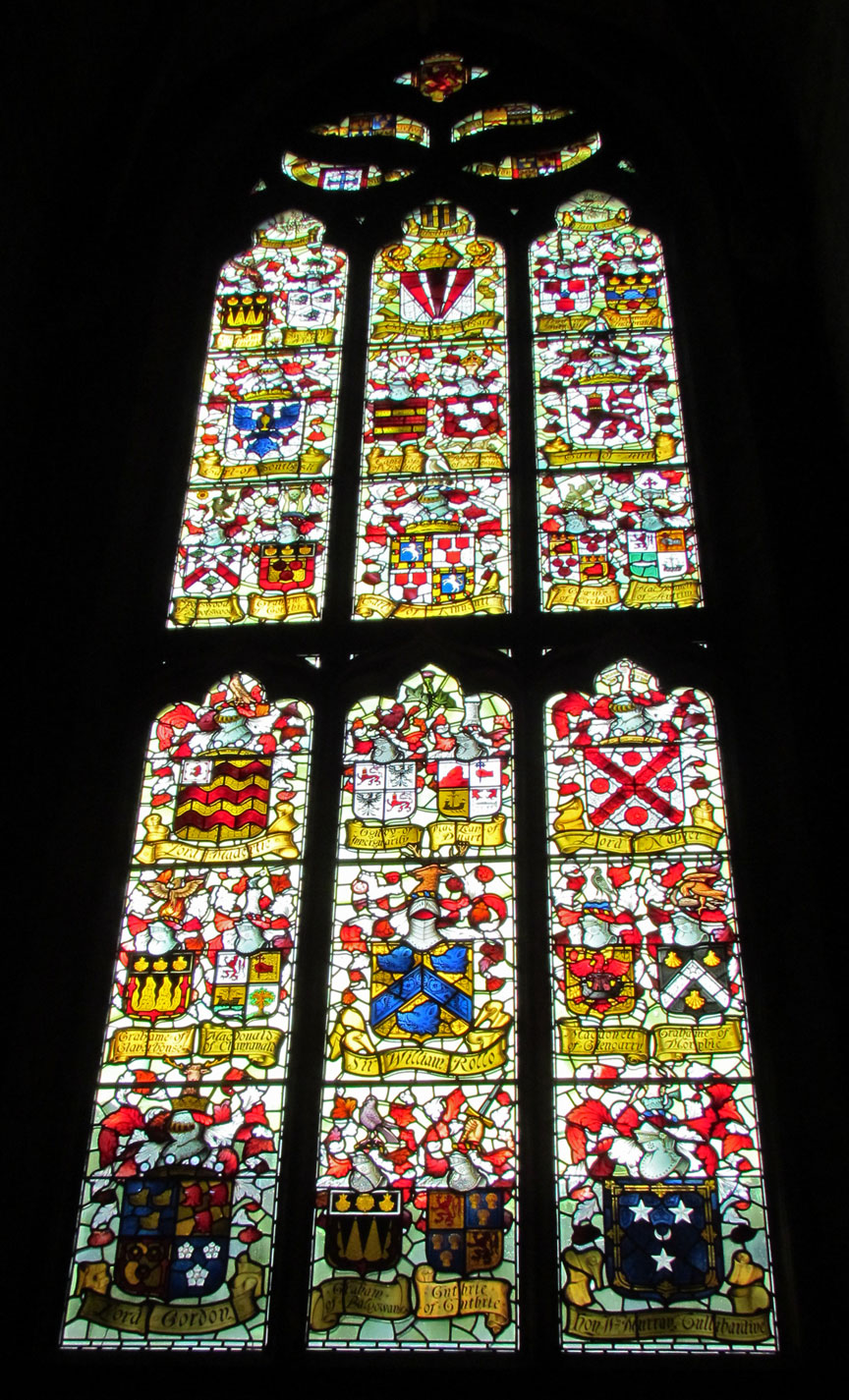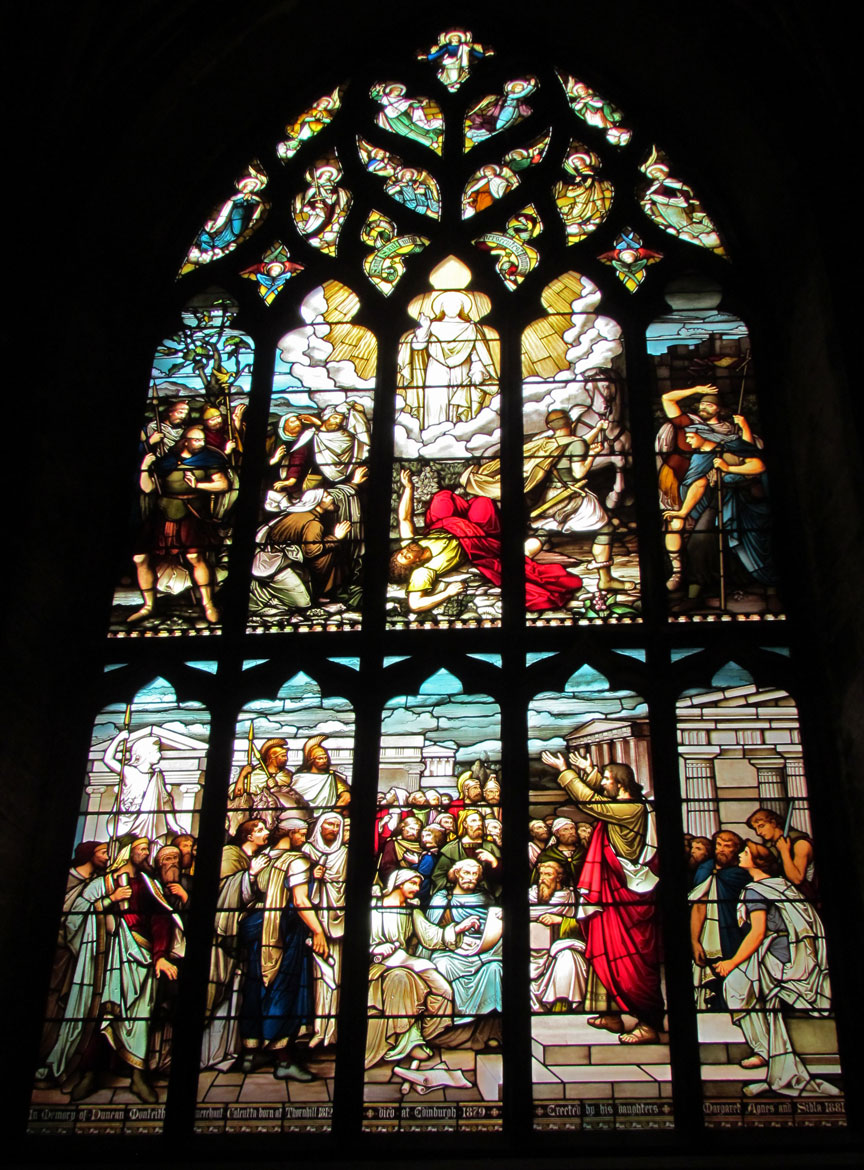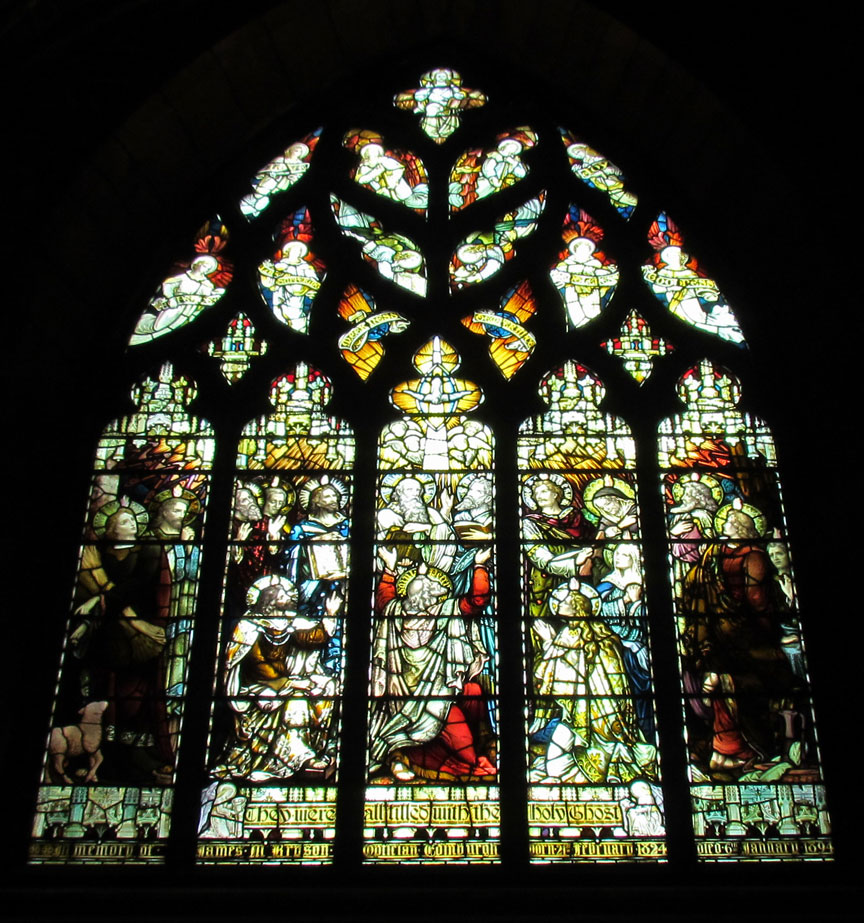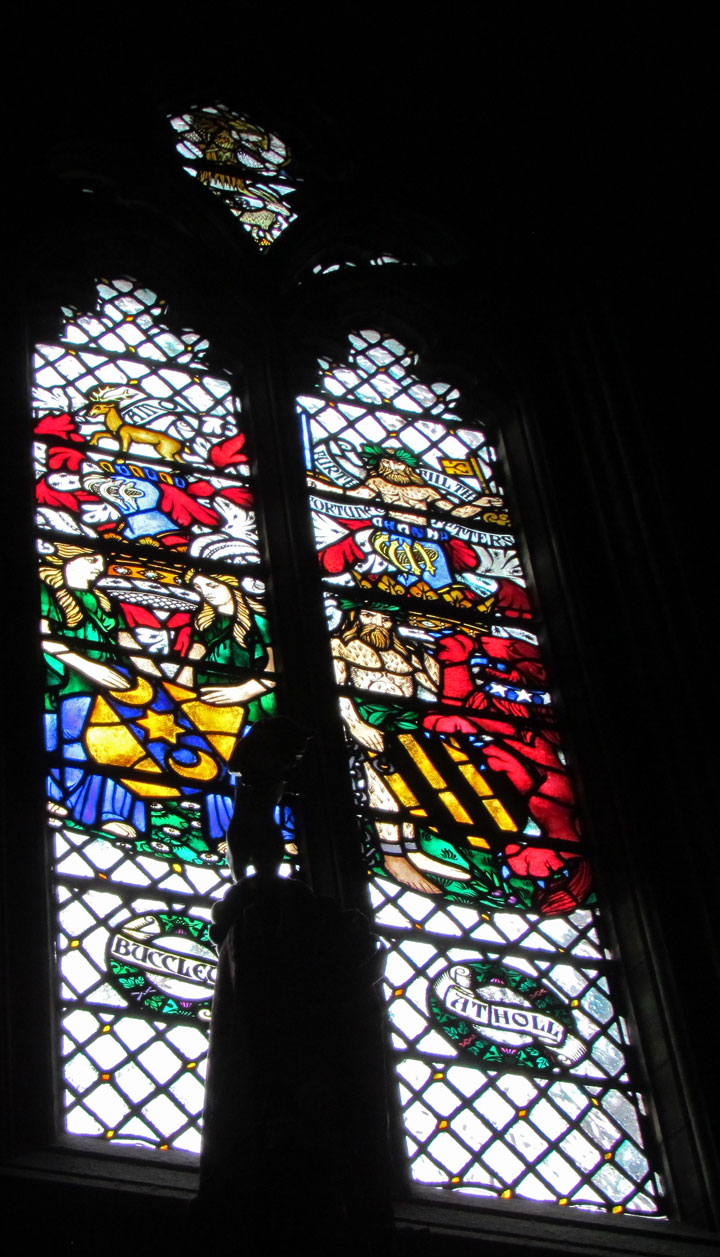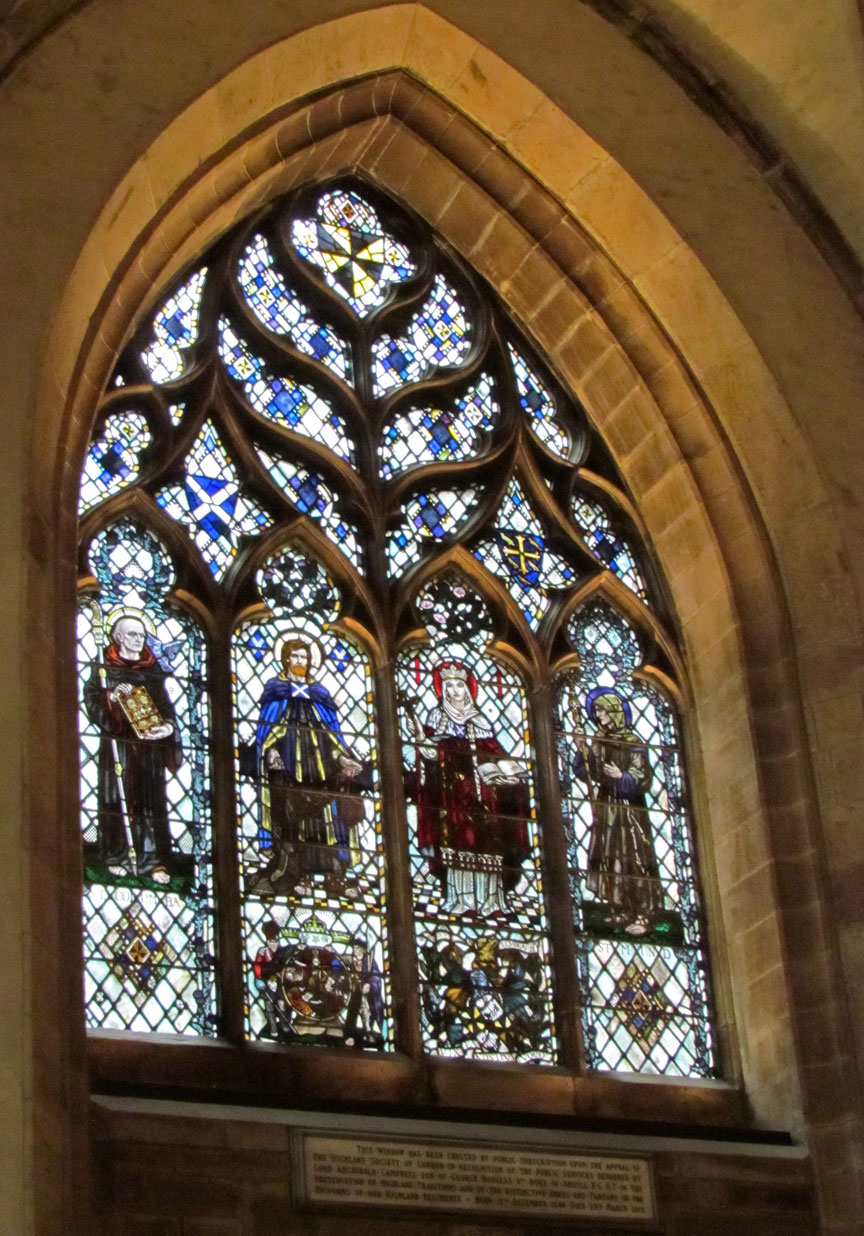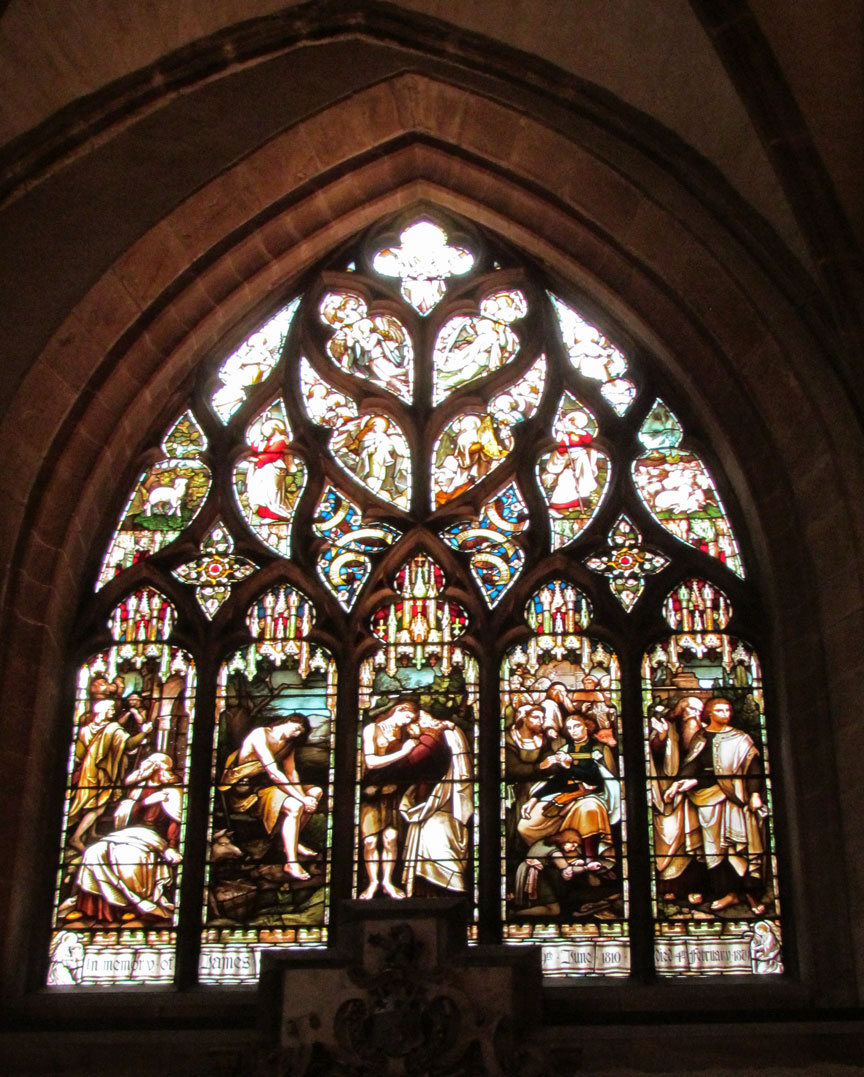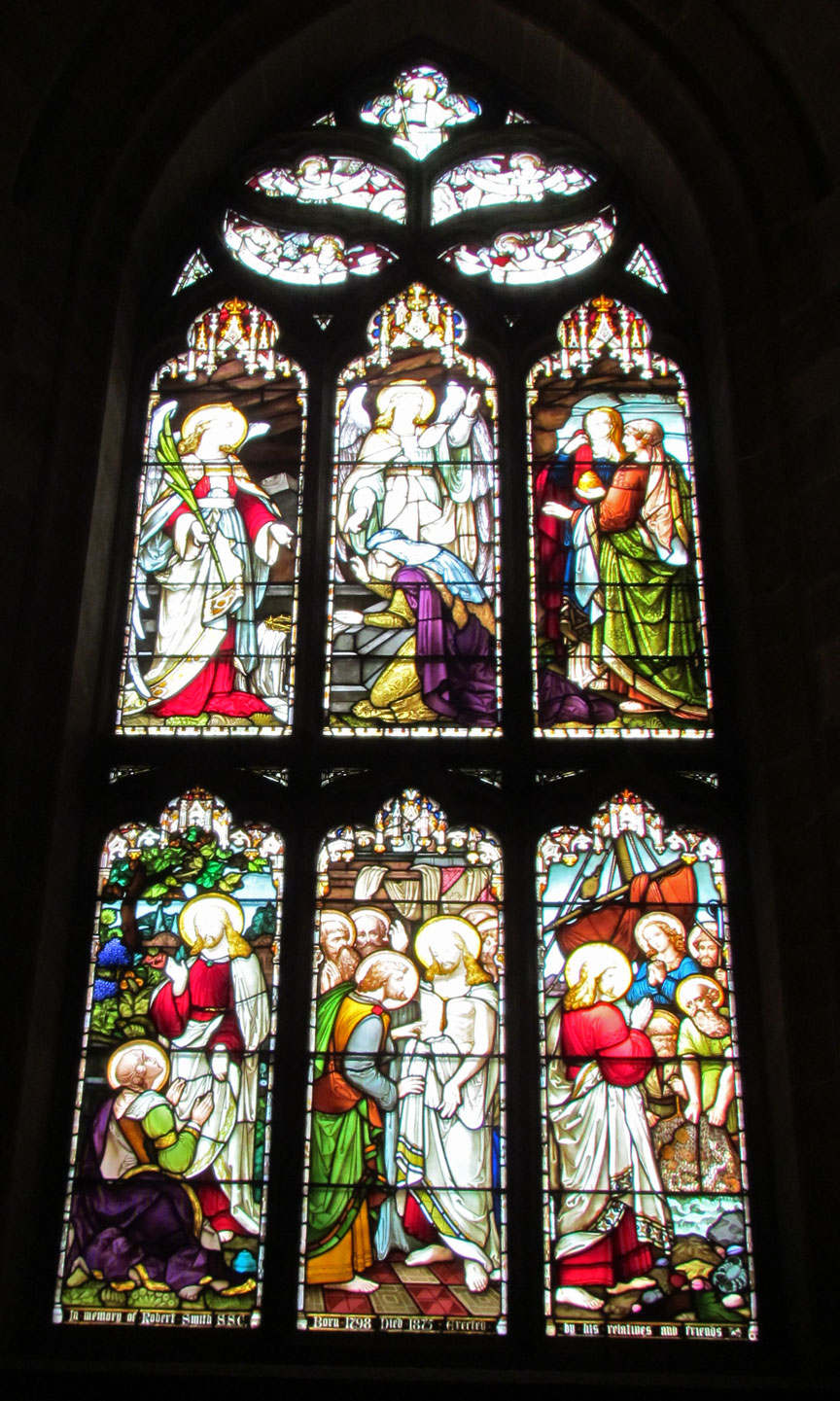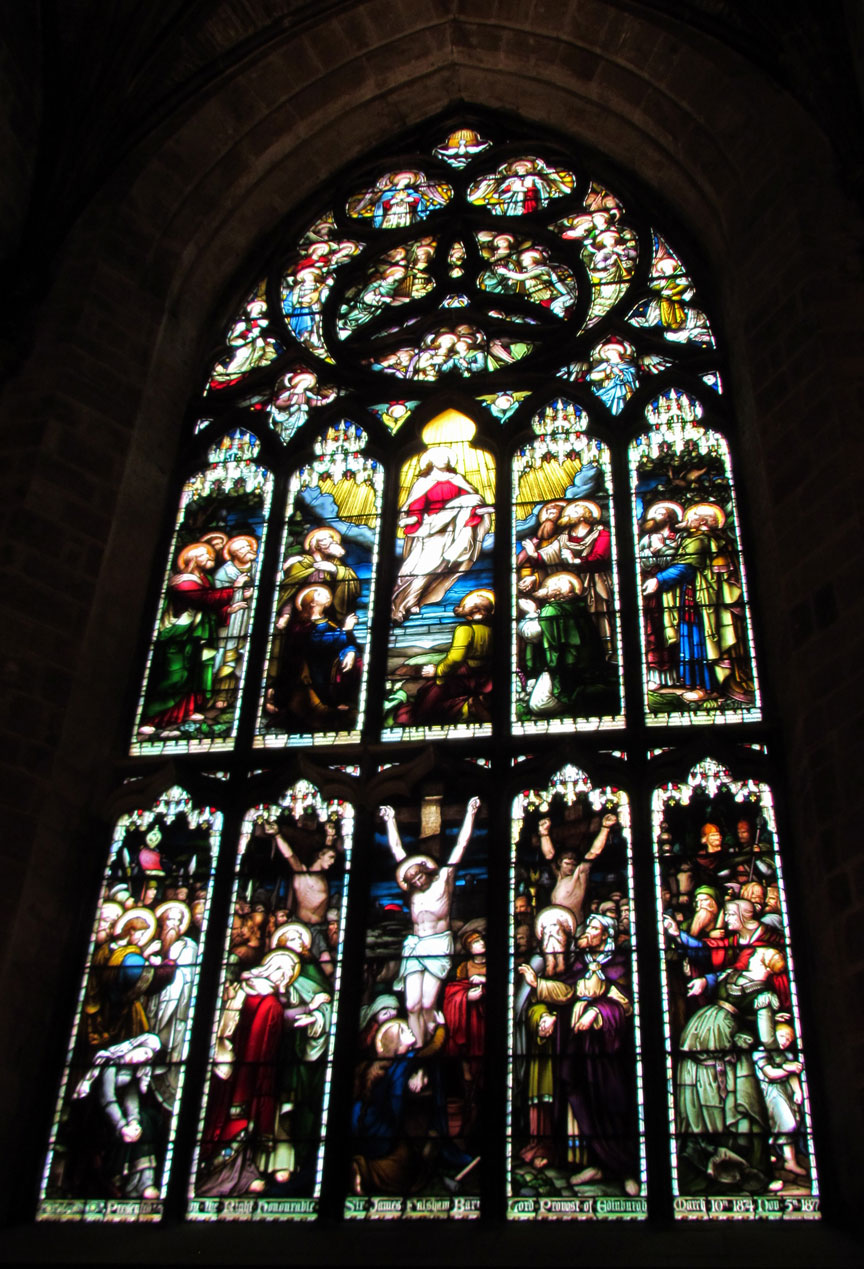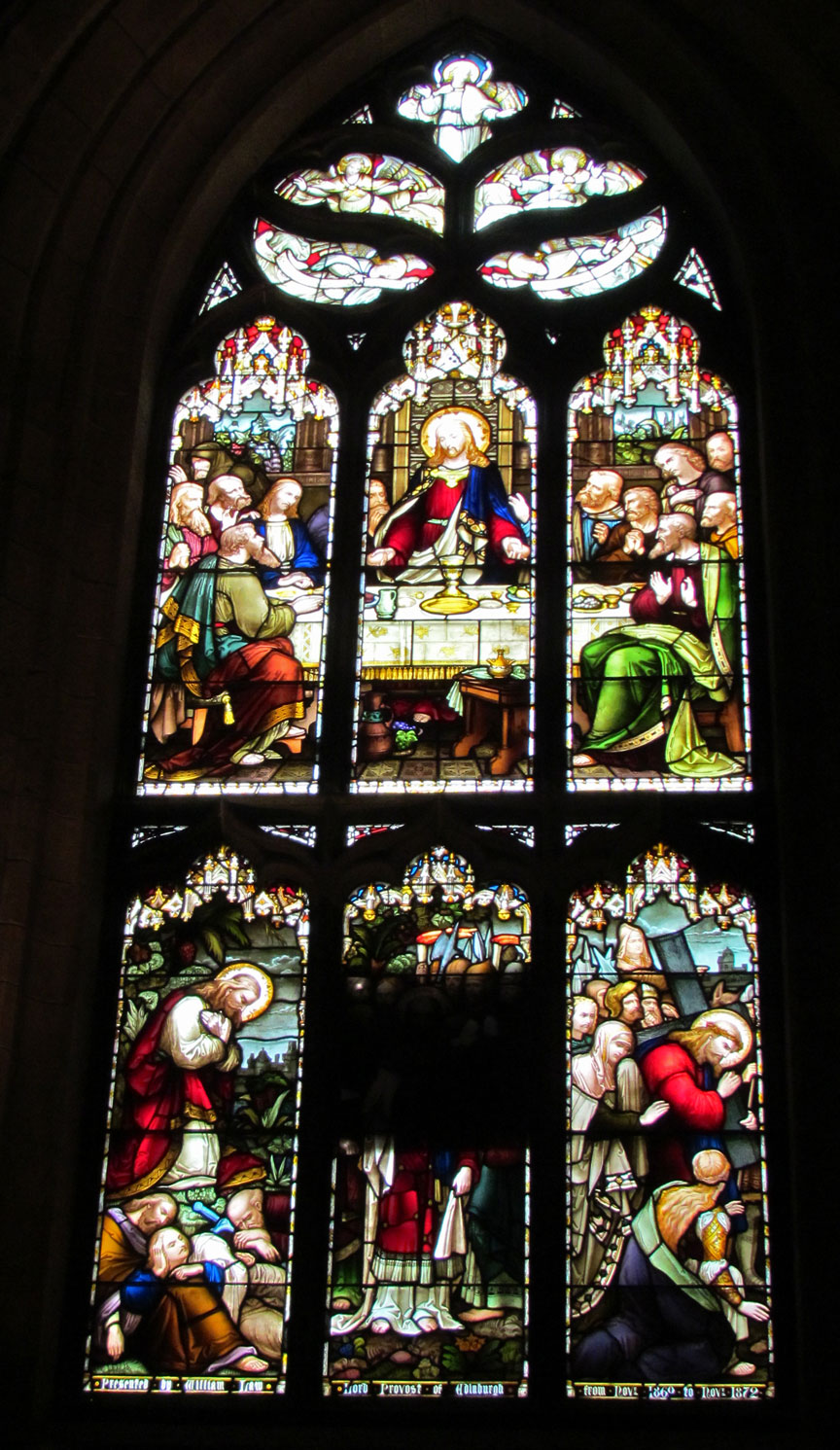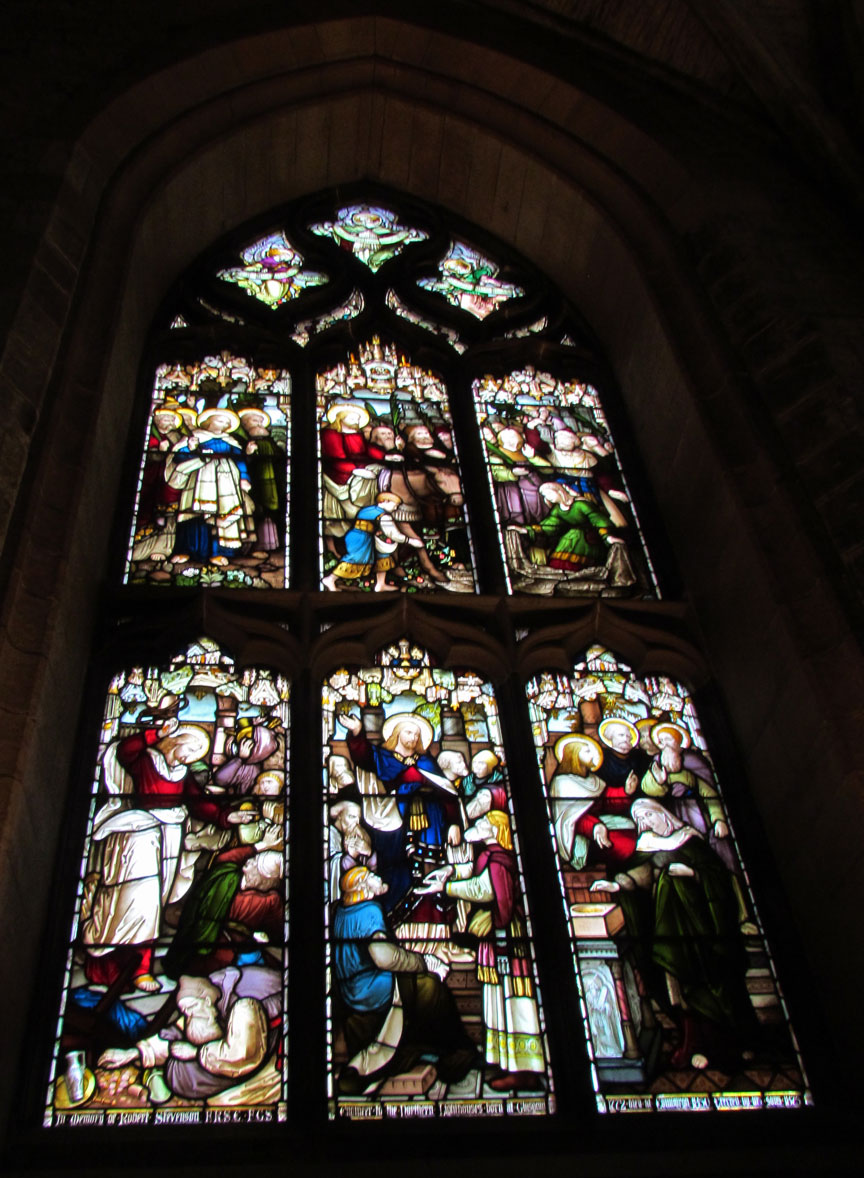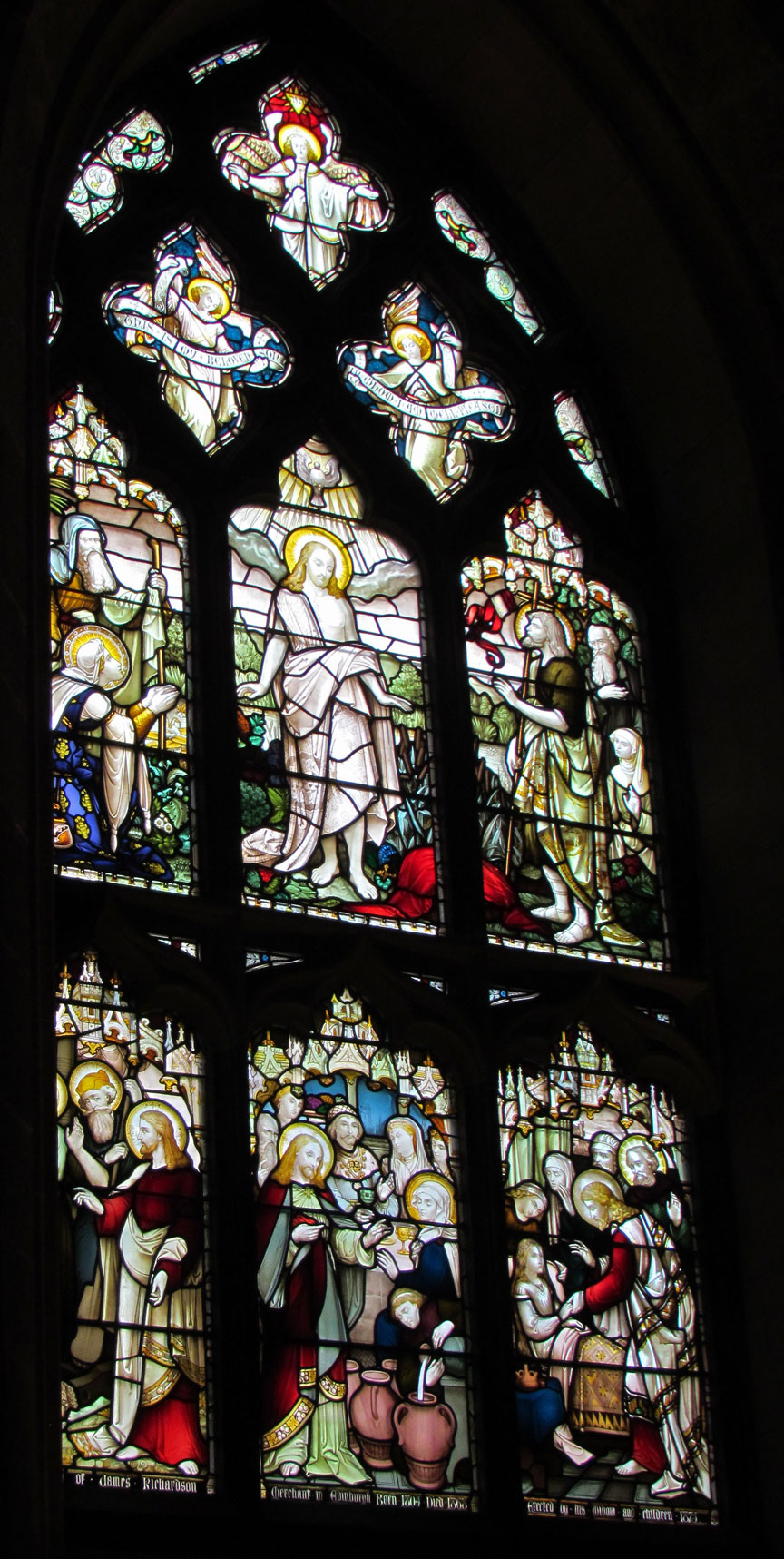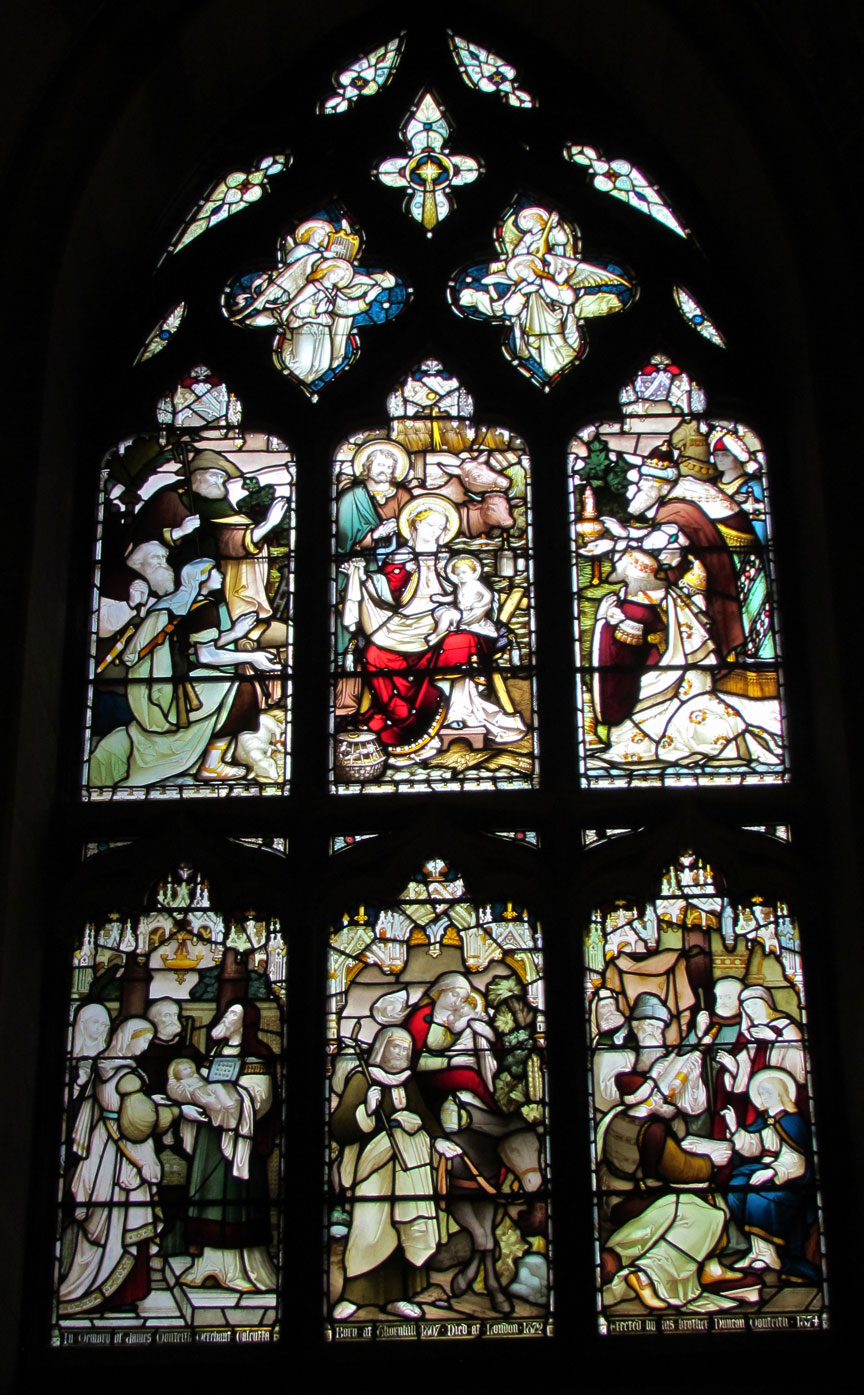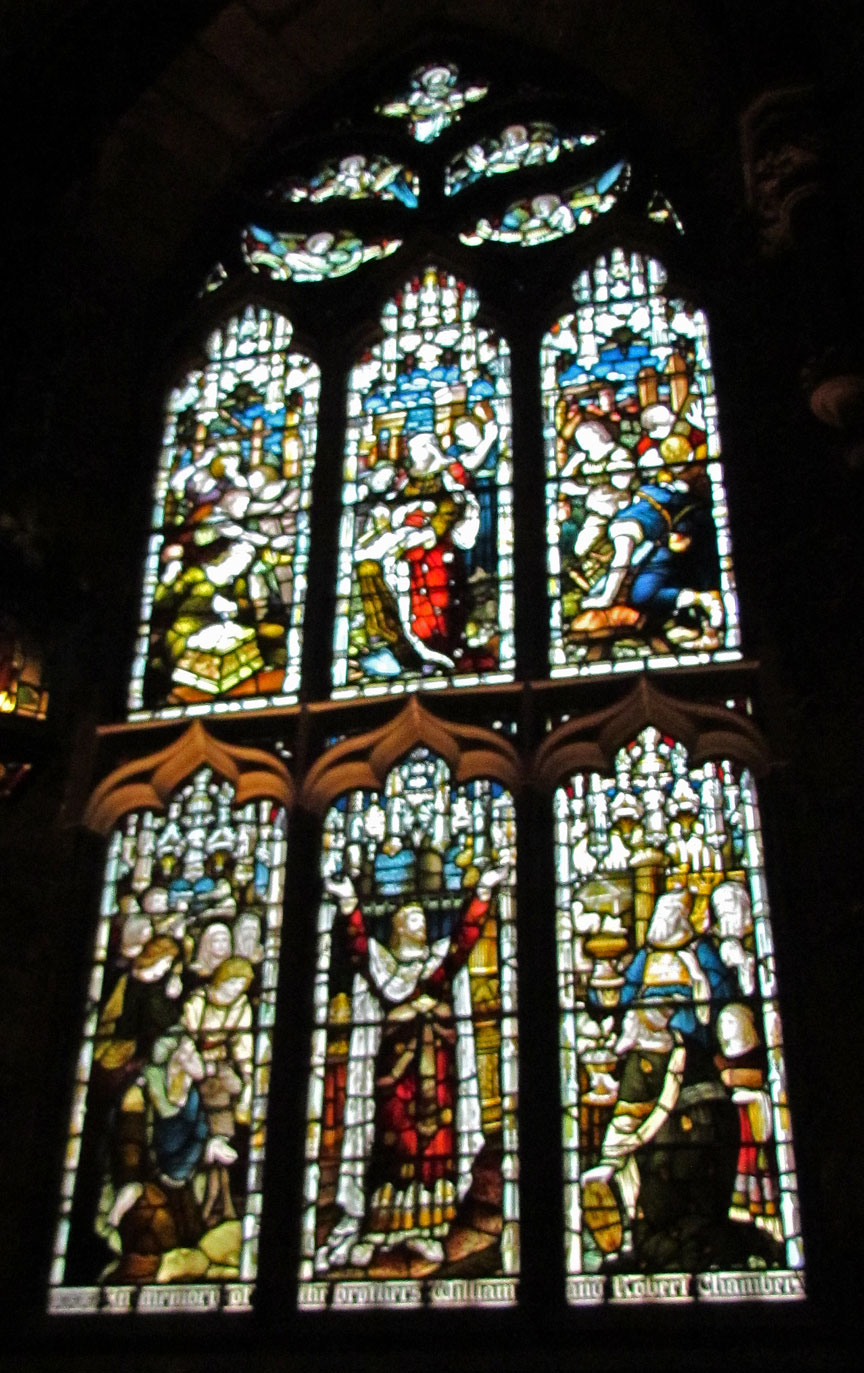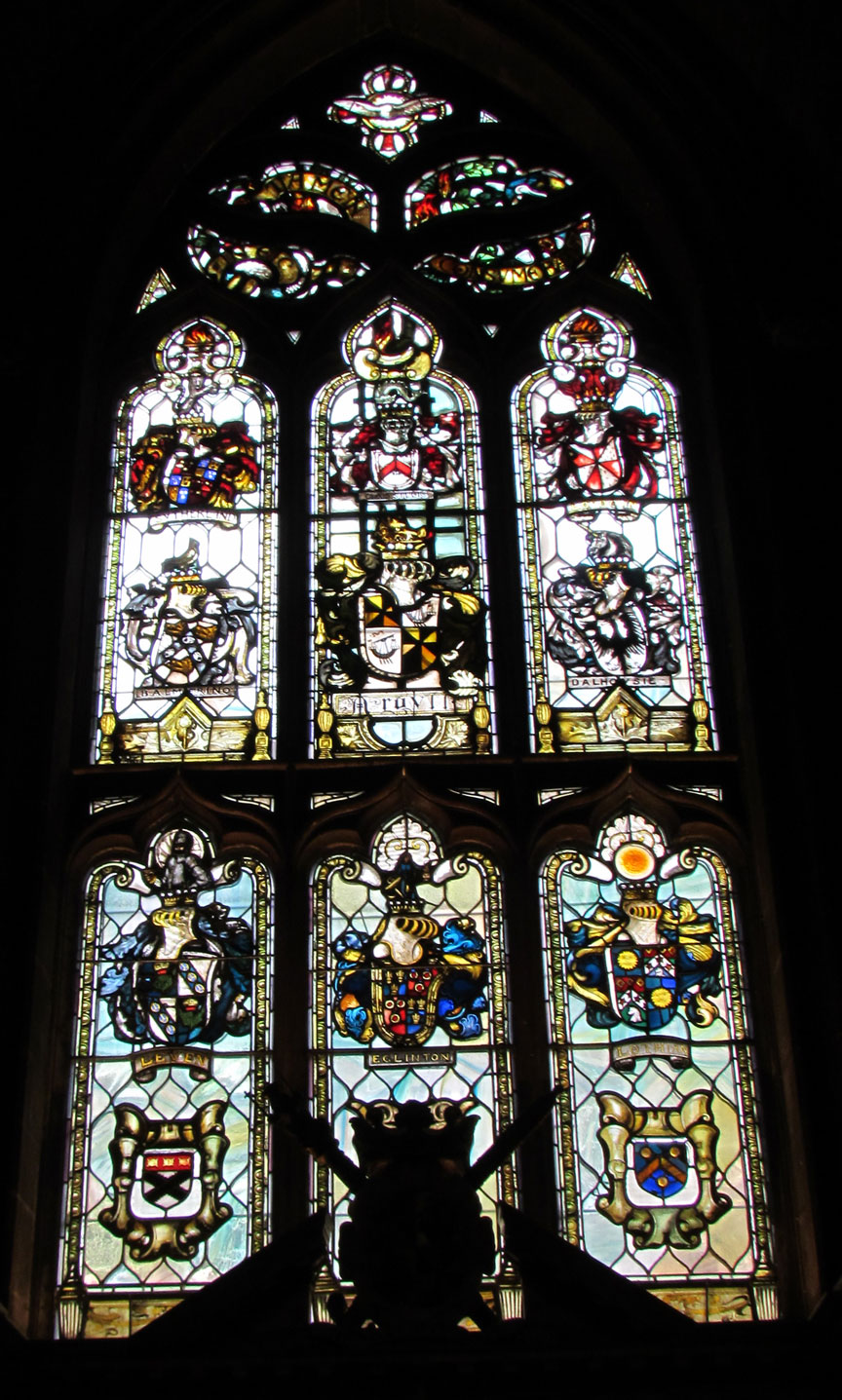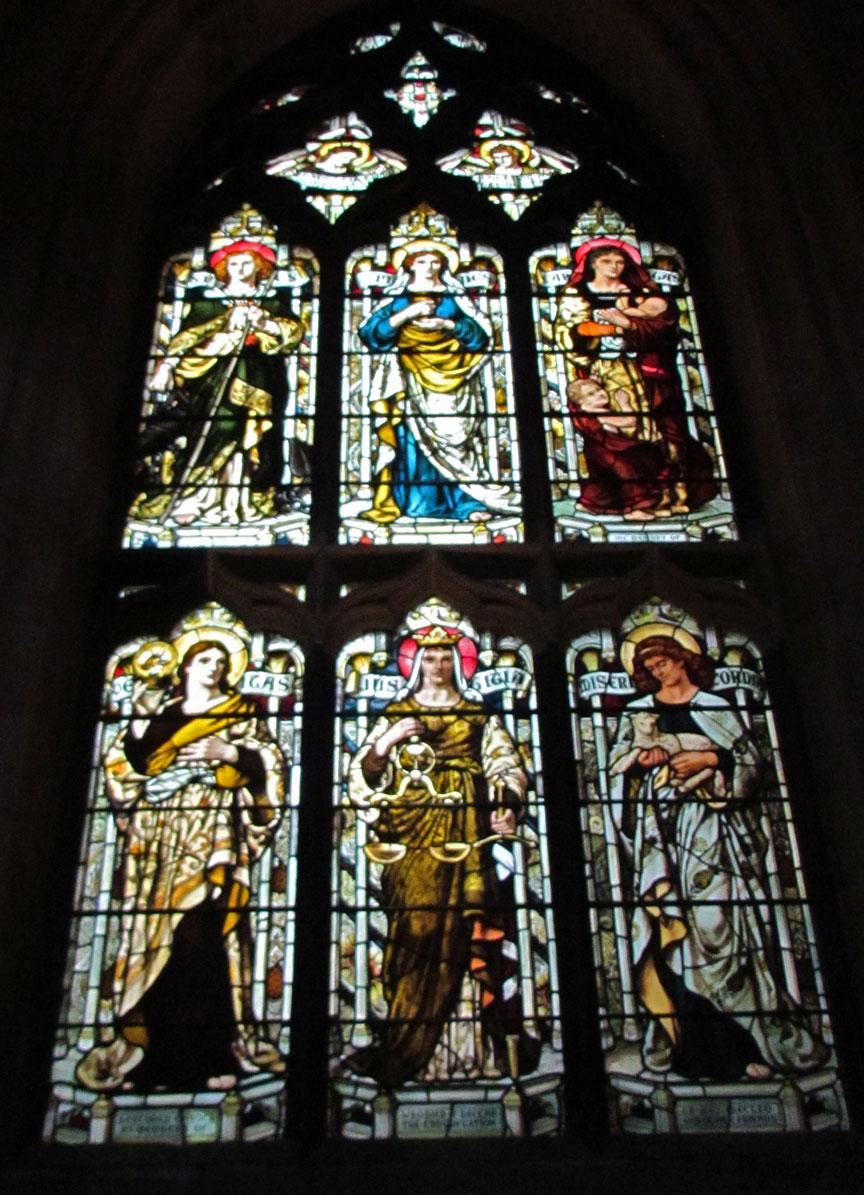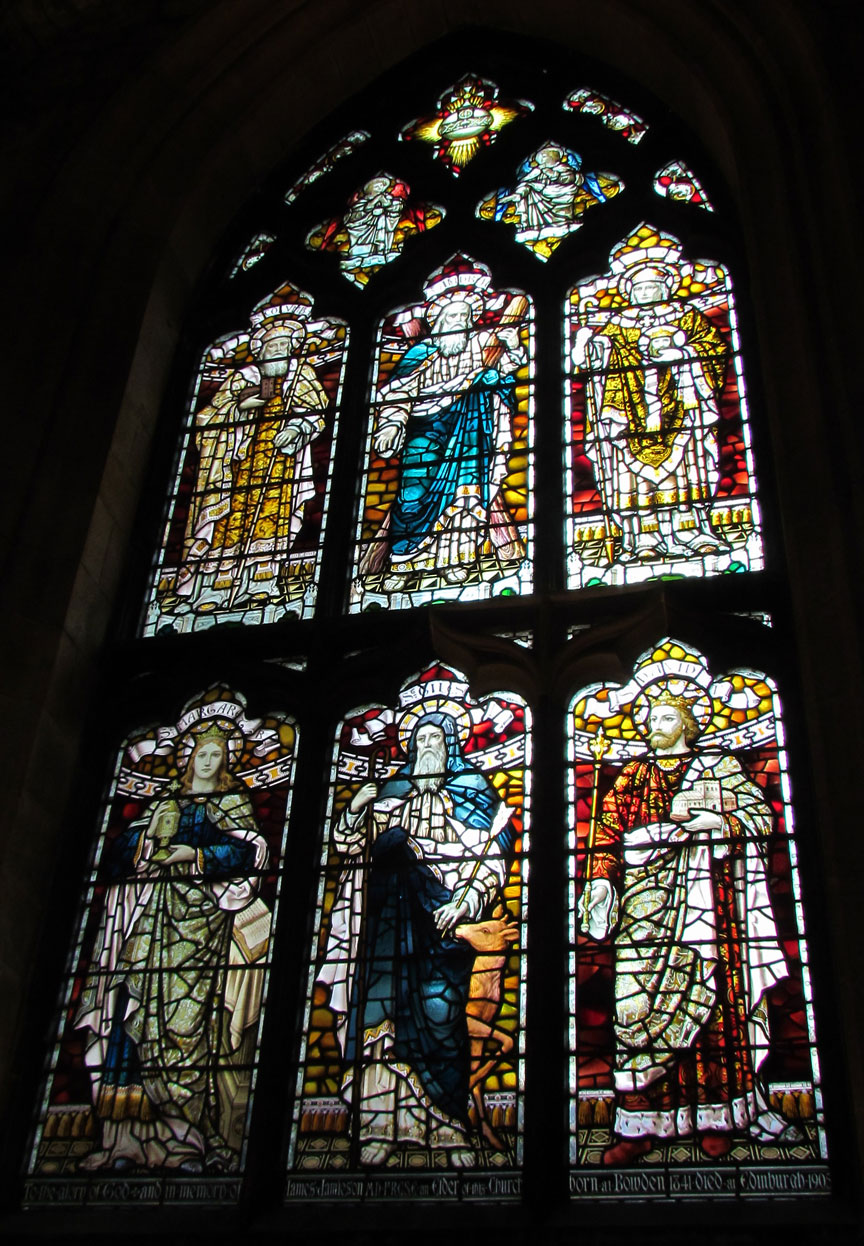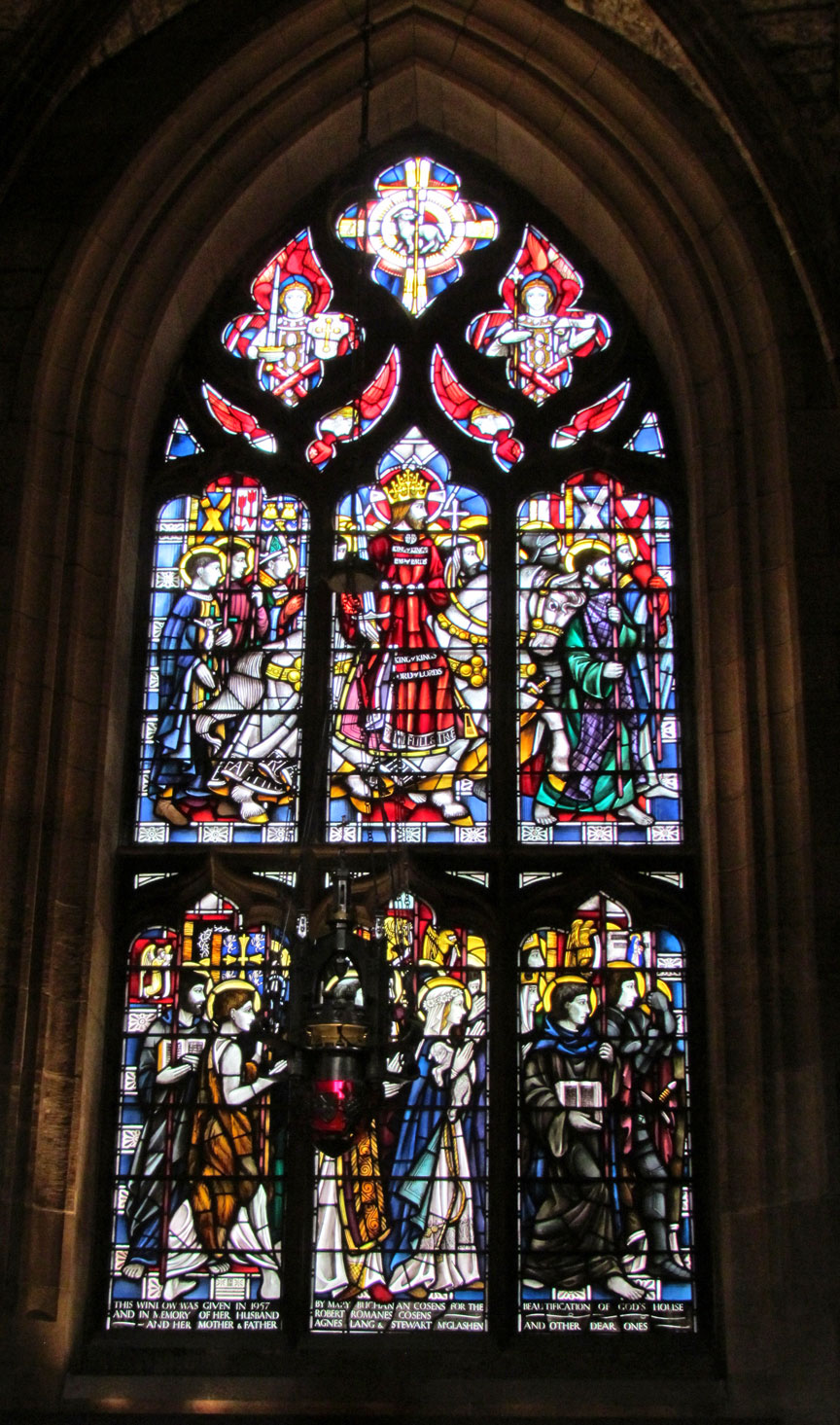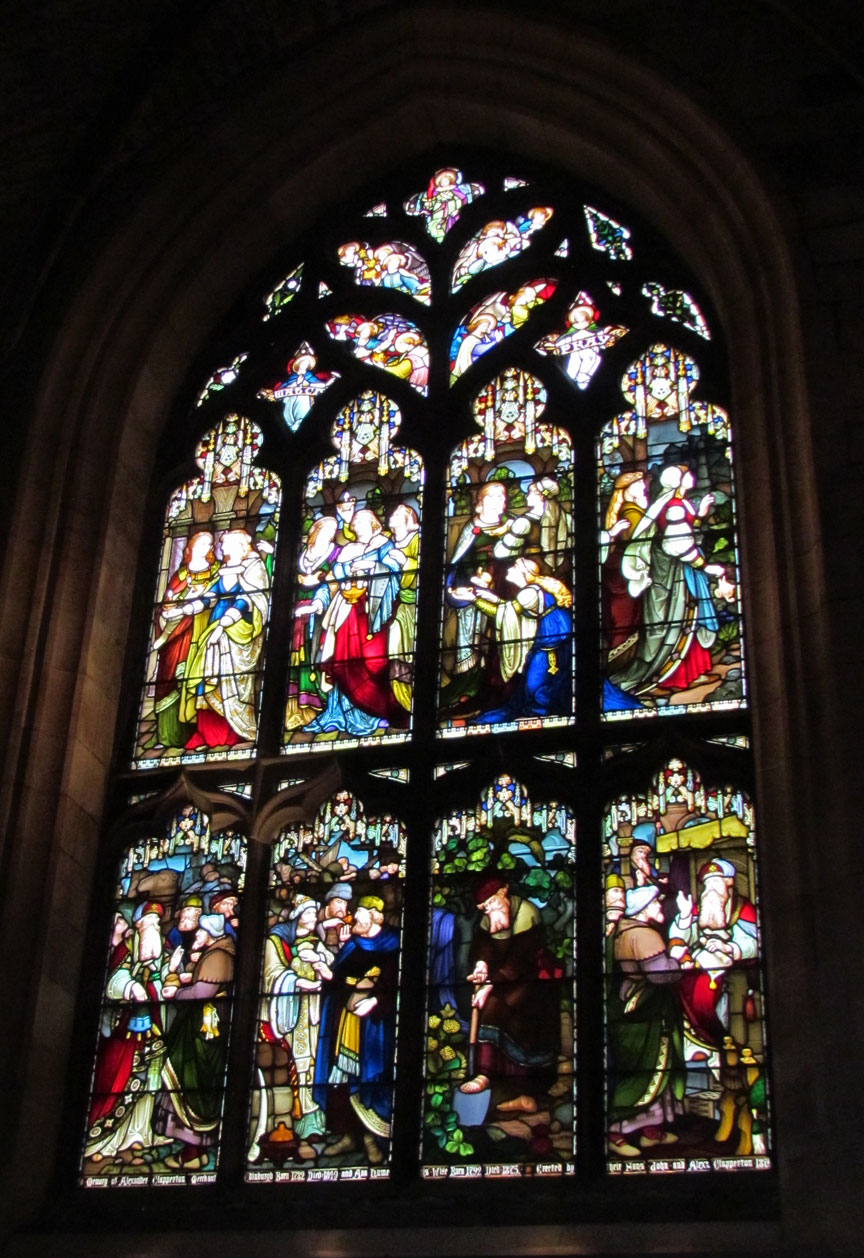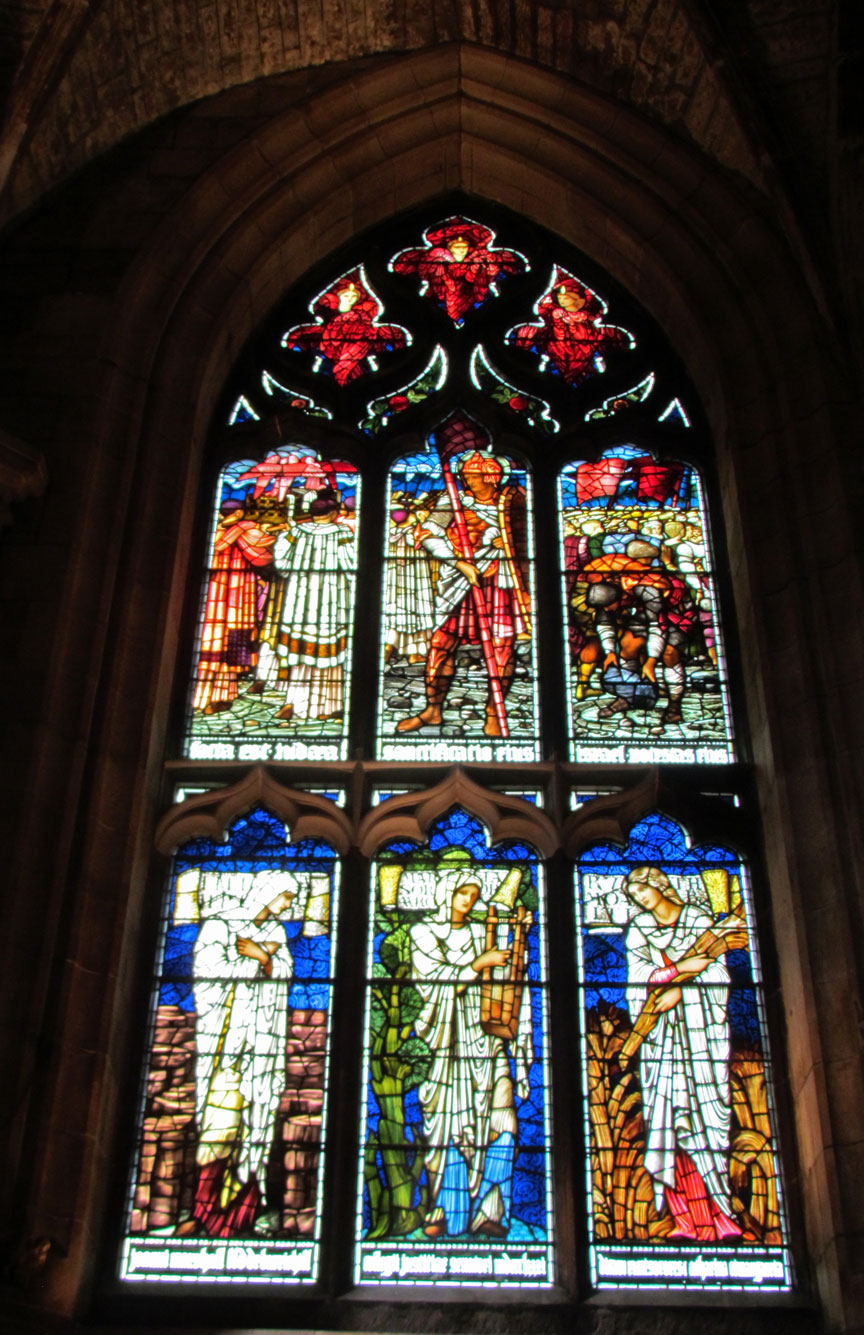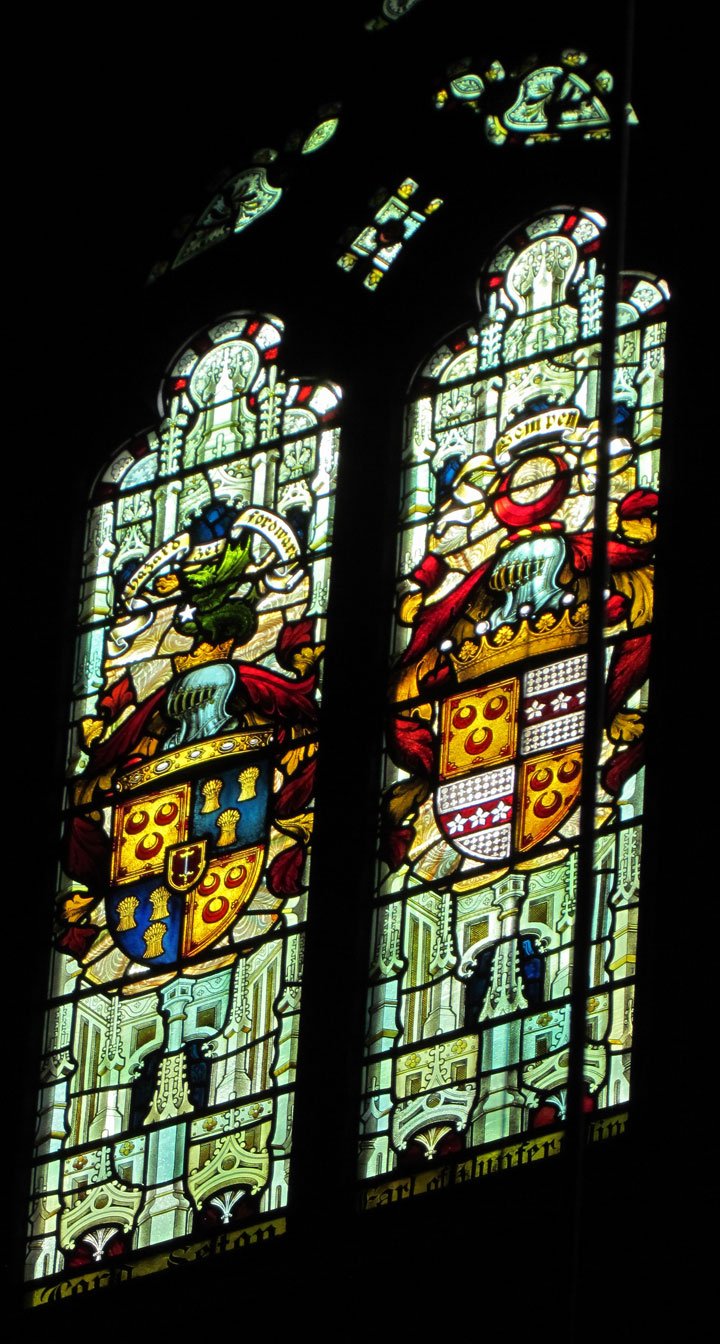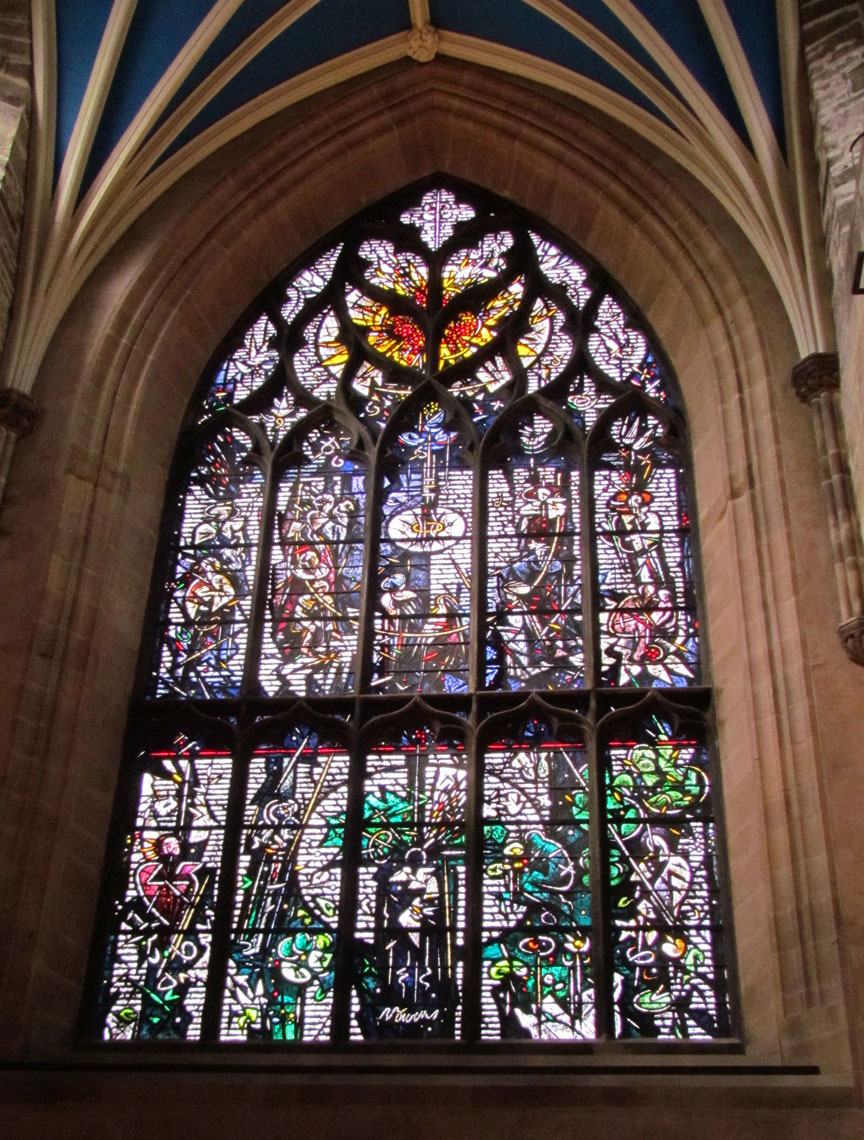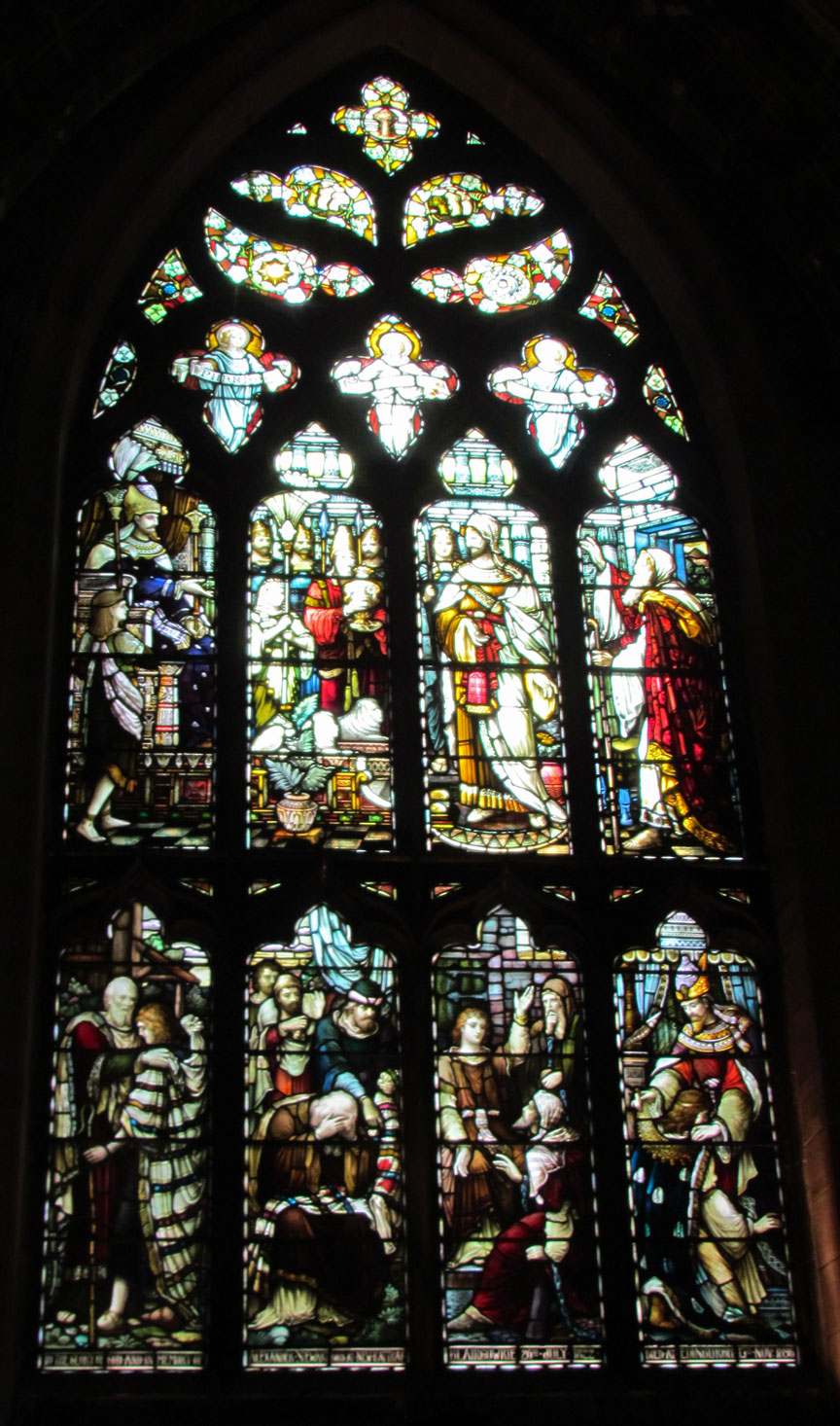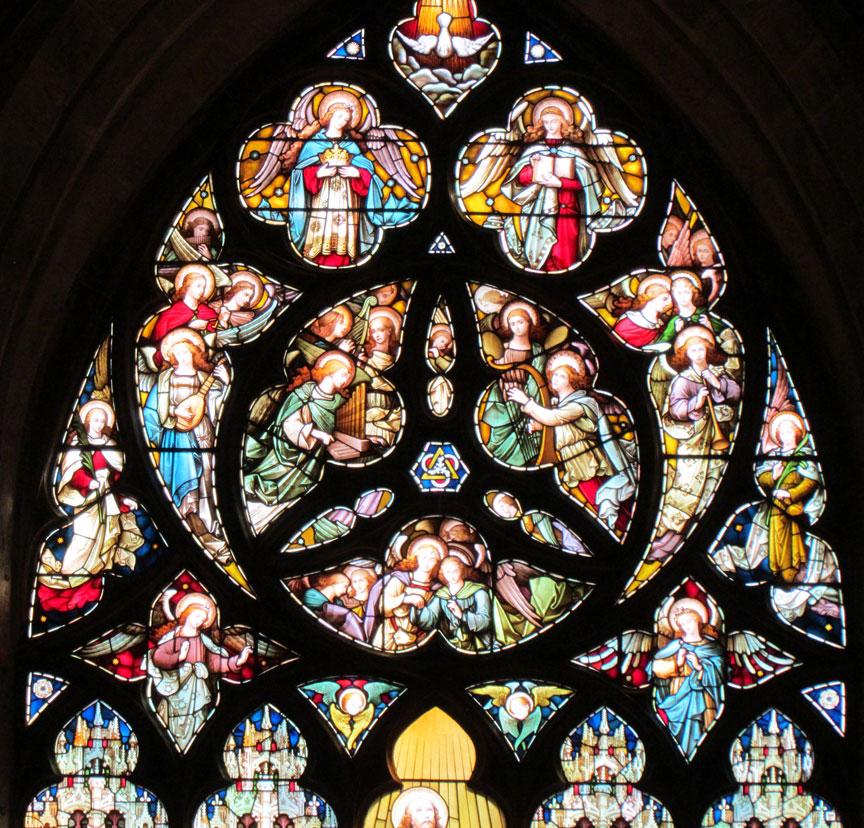

Stained Glass
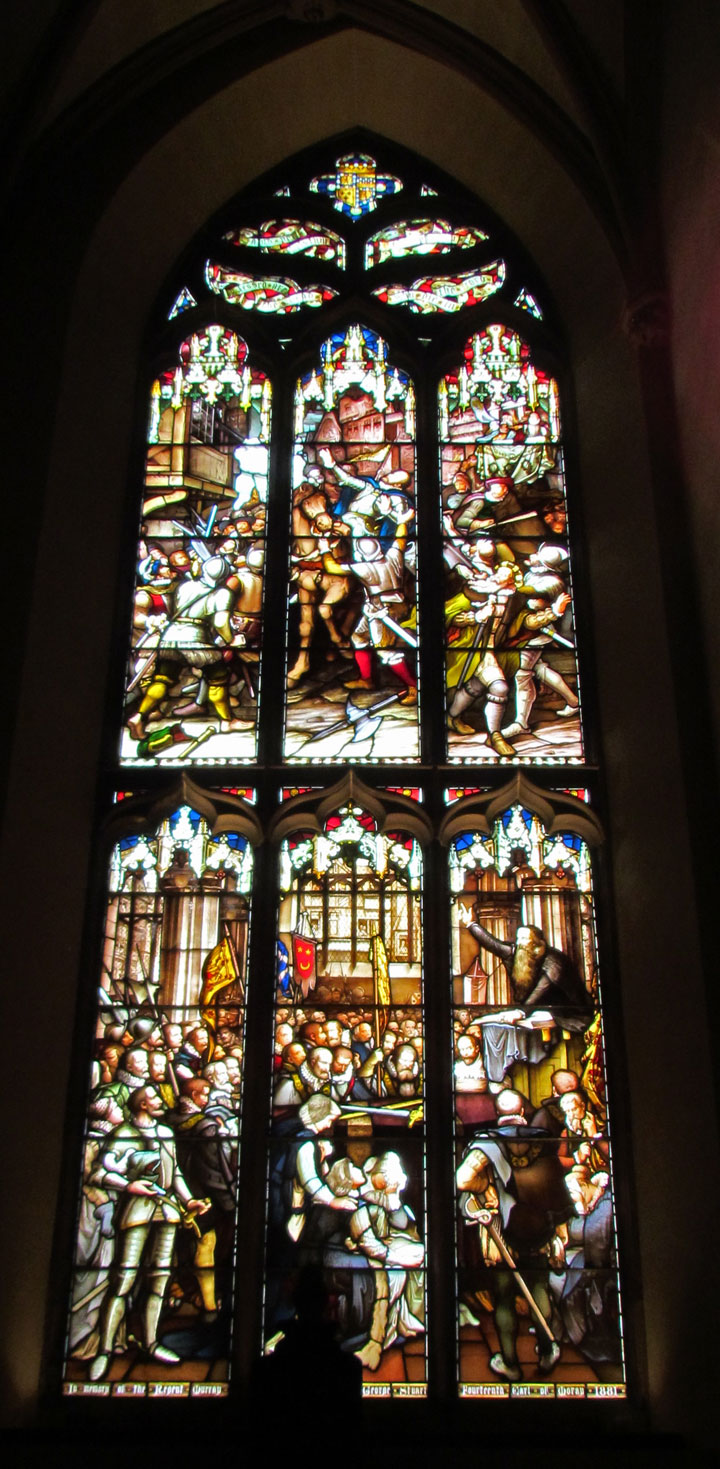
In the later 19th century, stained glass began to be put into the windows which had been largely clear or plain since the Reformation. This was a radical move in a Presbyterian church where such decorations were regarded with great suspicion. They were finally allowed on the basis that they illustrated Bible stories and were as such an aid to teaching, and not flippant decoration, or worse still perceived idolatry. Only a small number of windows were completed as part of the 19th-century restoration, but this began a process that resulted in the vast majority of windows containing stained glass by the middle of the 20th century. The windows were planned to form a continuous narrative starting in the north-east corner and finishing on the north-west side. One of the last windows of this plan depicts Saint Andrew, the patron saint of Scotland, holding his cross with, on either side of him, Saint Columba and King David (erroneously labeled Saint David). The depiction of saints, rather than Bible stories alone, by the mid 20th century shows how much attitudes to decoration had changed in the intervening period. Saint Andrew wears a flowing peacock-blue cassock and his features are modeled after prominent Edinburgh physician James Jamieson. Unusually, this window was funded by a grateful patient who insisted that Saint Andrew bear the features of the doctor. Below Saint Andrew are depicted Saint Giles, with his hind (a traditional association), and Saint Cuthbert. The dedication beneath the Saint Andrew window states: "James Jamieson Fellow of the Royal College of Surgeons Edinburgh and Elder of the Kirk, born 1841, in Bowden, and died 1903".
Text from Wikipedia
